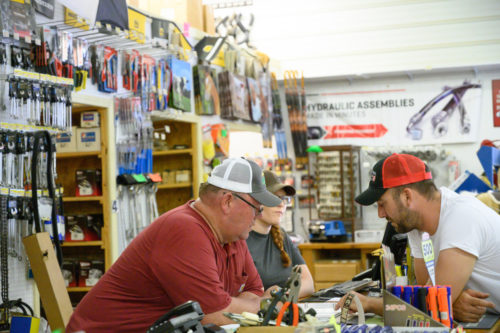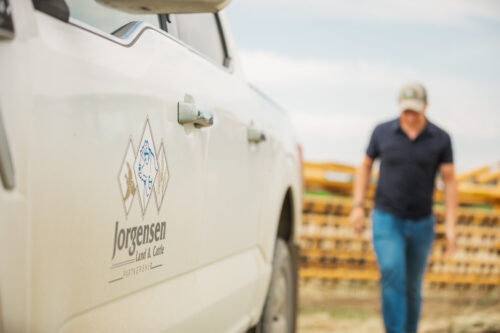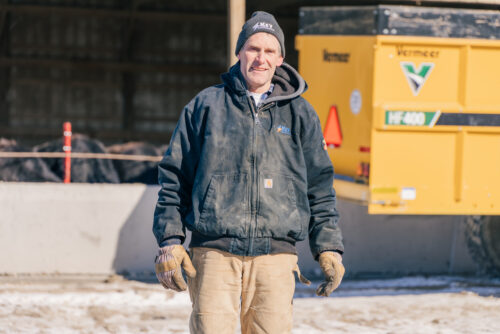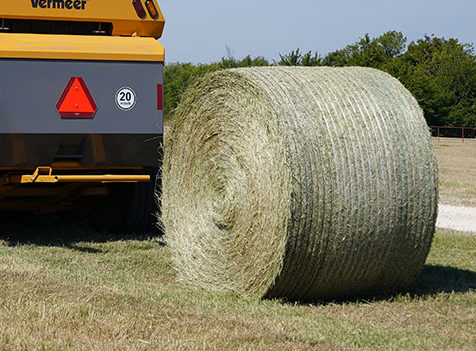
What to look for when buying quality hay
February 2023
Buying quality hay can be a challenge for cattle producers. With multiple years of drought, U.S. hay production is the lowest it’s been since 1961, according to Jon Paul Driver, host of the Hay Kings podcast.
“There truly is less hay available than there has been in any other time,” he said.
While producers don’t have a lot of options right now, it’s still important to shop around to get the best quality hay for their needs. We’ve outlined some important factors for producers to consider when buying hay.
Weight is a big consideration.
“As you’re buying hay, there is nothing more important than the weight if we’re talking about getting a good fair deal,” said Driver. “I would recommend that every producer buy hay based on weight, and not on bale counts,” he added.
Driver went on to explain that the weight variance in a round bale could be between 50 lb and 200 lb (22.7 kg and 90.7 kg). Bale weight affects not only the amount of hay being bought or sold, but also the cost of feeding and transporting it.1

Nutrient content determines hay quality.
“The second most important thing the hay buyer can do is get the hay tested for nutrient quality,” said Driver. “Quality can mean lots of things. If you’re a dairy farmer, you want to see the test results that tell you so many things from protein content to fiber digestibility. All of that comes out in the milk,” he said. “For beef, the reality is a little different. We know that cows that get the nutrients they need produce better calves. [Likewise], if you’re feeding good hay to calves, they’re going to grow faster in their younger days. All of those things make a difference in the profitability of a beef operation. So, understanding the nutrient analysis on that hay is the quality metric that you’re looking for.”
Many hay producers will sample their lots of hay before they sell them, but it’s also important to sample hay in storage. Driver said he points cattle producers to their local university extension publications to learn about good hay sampling technology. This Hay & Forage Grower article outlines sampling techniques and when to sample.
Match forage types to operation goals and be willing to pay premium prices.
When it comes to choosing the type of forage that would be the best quality hay for their operation, producers need to understand the nutrient composition and fiber digestibility of the forage and whether it will help them meet their goals. Raising high-producing, valuable animals may require producers to spend more money on hay, according to Driver.
“If you’re really paying attention in a cow-calf operation, sometimes spending a few more dollars on hay is actually a little cheaper because of the digestibility of the hay,” he said. “Knowing the digestibility of hay and how much of that hay gets converted to energy, you can spend a lot of money on poor quality hay and have the same result as paying a few more dollars a ton and feeding a little less.”
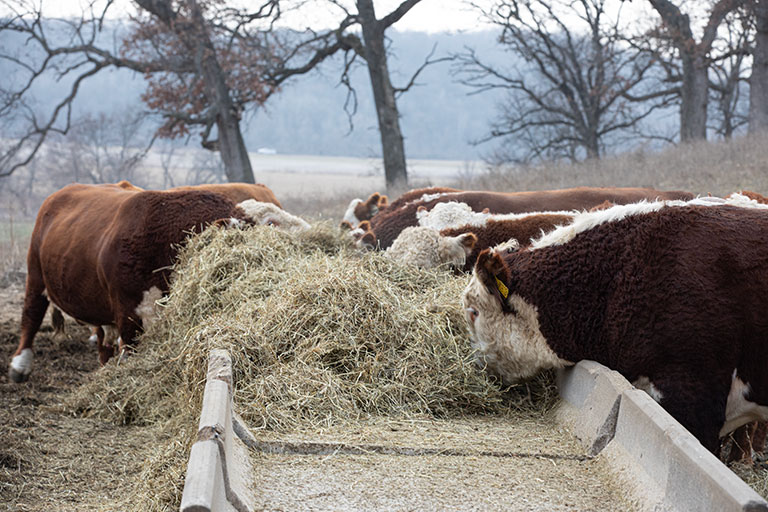
What about color?
Driver said hay color matters the least when determining whether you are looking at quality hay — although a lot of producers will judge hay by its color.
“If you’re looking at many stacks of hay and you look at the feed tests, something that looks bad — that the color isn’t good — might actually test and feed the best,” he said.
He did add that discoloration can be indicative of heating.
“Sometimes that color is described as tobacco. What happens there is there’s too much moisture, there are bacteria that start to break down those sugars. As they break down the sugars, they create heat. That heat actually degrades protein,” Driver said.
Many producers notice their cows love eating tobacco-colored hay because of the sweet flavor and smell caused by heating. But, heating causes protein degradation and this hay is, by many other metrics, less desirable.
“So look beyond that. If you see that tobacco coloring, that should be indicative of a lower protein and a lower nutritional value of that hay,” he added.
Even though some colors, like black or tobacco brown, may indicate a quality problem, Driver emphasized the need for feed testing.
“If you have a feed test, you don’t need to look at color,” he said.
Driver added that it’s difficult to detect mold by looking at the outside of a bale. Mold isn’t usually uncovered until a bale is opened up.
“So if you have the ability as you’re looking at buying hay, opening a bale is valuable to get to the inside,” he said.
Look for other physical indicators of hay quality.
Specifically when it comes to baleage, there are physical components that affect the value of hay beyond the nutrient analysis.

“Whether it’s bale-handling ability or dirt in the hay, there are observable things that change the value of hay,” said Driver. “Major deformation in shape can be indicative of a quality problem. A saggy, lopsided bale might mean it was baled too wet, or that there’s some other problem with it. So looking at the physical shape of the bale, the density of the bale, the packaging of the bale, that all matters too,” he added.
If bales aren’t dense enough or wrapped well, you can lose hay and waste time on manual labor if they break or won’t stack.
“If you start breaking round bales, that’s hundreds of pounds [of hay] that you have to handle awkwardly by hand, with a pitchfork or with a loader on a tractor,” Driver said.
Special considerations for hay in drought conditions.
Drought can change the quality of hay.
“There are some unexpected things that come out of drought. Grasses, in particular, actually store sugars in drought conditions as a survival mechanism. This is something that you might not expect that can push the sugar content of hay substantially higher when those plants get stressed … As part of that, you might get a little higher quality of higher sugar tests on the hay,” said Driver.
“During drought, hay also tends to mature faster. That’s another survival mechanism. Hay wants to go reproductive at a shorter height. And when that hay starts to go reproductive, it transfers energy into the seeds,” explained Driver.
This can lower the quality of the hay. It can be over-mature because producers working in drought situations want to wait a little bit longer to get a little bit more volume.
Know your hay producer.
“The best advice that I can tell you is to have a good relationship with your farmer. Know who is supplying the hay. Know their philosophy,” advised Driver.
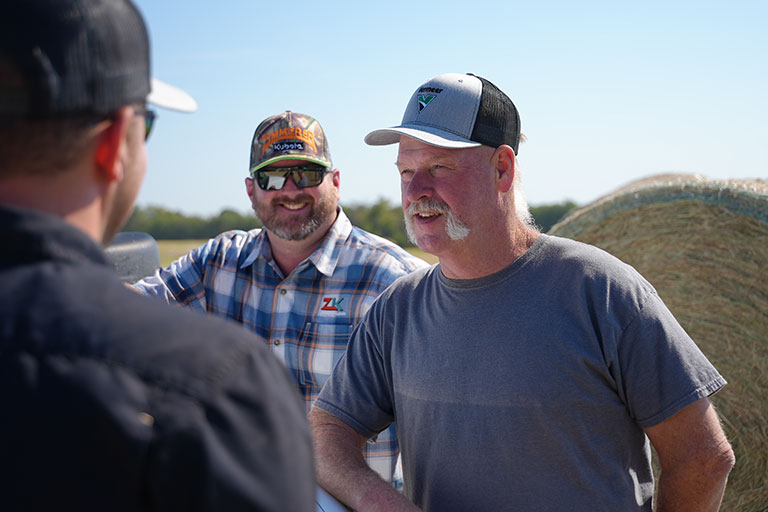
To learn more from Driver about all things forage related, listen to his Hay Kings podcast.
For more on buying hay, check out this article: Buy Hay the Right Way.
Information noted above was gathered from a third party who was advised his/her experience might be featured in marketing materials. This article contains third-party observations, advice or experiences that do not necessarily reflect the opinions of Vermeer Corporation, its affiliates or its dealers. Individual results may vary based on care and operation of machine and crop and field conditions, which may adversely affect performance.
Vermeer Corporation reserves the right to make changes in engineering, design and specifications; add improvements; or discontinue manufacturing at any time without notice or obligation.
Equipment shown is for illustrative purposes only and may display optional accessories or components specific to their global region.
Please contact your local Vermeer dealer for more information on machine specifications.
Vermeer and the Vermeer logo are trademarks of Vermeer Manufacturing Company in the U.S. and/or other countries.
© 2023 Vermeer Corporation. All Rights Reserved.
1Banta, Jason. Bale Weight: How Important Is It? AgriLIFE Extension, Texas A&M



